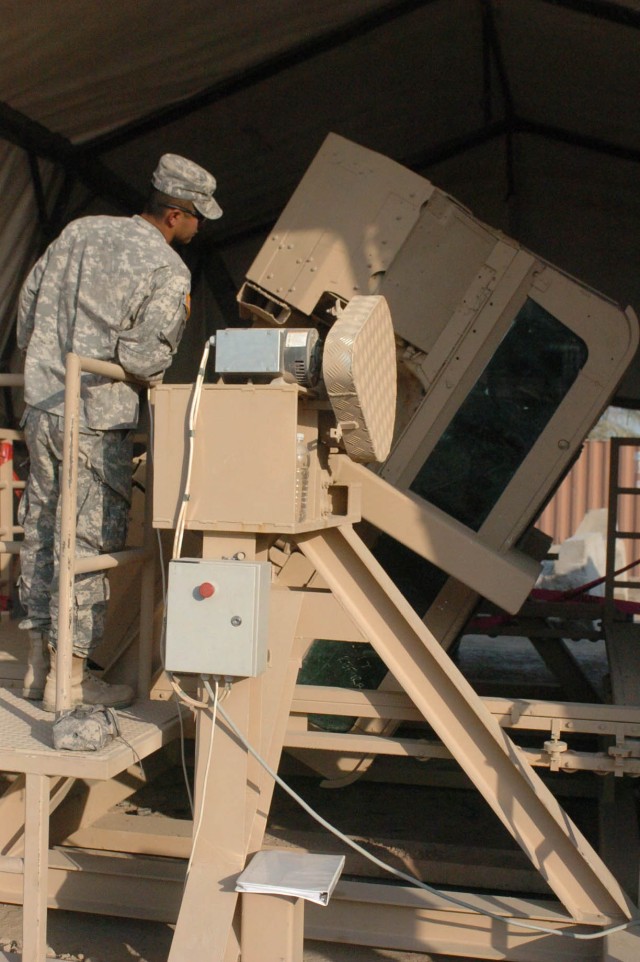FORT MCPHERSON, Ga. -- When he needed a job done, he turned to the one thing that had proven itself time and time again: the Army's noncommissioned officers.
In 2005, Chief Warrant Officer 4 Rik Cox, tactical safety officer for the Army National Guard Readiness Center in Arlington, Va., was tasked with finding a way to reduce fatalities from overturned Army vehicles. Along with a team of three NCOs, the four would create a device, the HMMWV Egress Assistance Trainer, which would fulfill the mission and go on to be named one of the Army's greatest inventions for 2007.
The trainer teaches Soldiers how to react in vehicle rollover situations by properly and safely training them to open safety restraints and exit a Humvee from a variety of rotated positions. The device also helps Soldiers overcome the natural fear and panic associated with rollover incidents, according to the Army Material Command Greatest Inven-tions Awards Program packet.
Leading the NCOs was Staff Sgt. James Jett, safety NCO for the Army Safety Aug-mentation Division, Fort McPherson Safety Office, who at the time was working as a mechanic in equipment concentration site 43 on Fort Gillem.
"Cox came up with the idea and pulled us into the loop," Jett said of himself and fellow NCOs Sgt. Mickey Hill and Staff Sgt. Christopher Whiting. "He asked us if we could assist him and fabricate something based on his designs."
With only the remains of a wrecked Humvee to work with, Jett began making the concept a reality, all the while fighting the doubt some individuals had that it couldn't be done.
"Nothing like this was ever done before," Jett said. "Like any invention you have to start somewhere."
Although they had to make something out of basically nothing, the job was completed in three-and-a-half months, including the time needed to make Jett's adjustments to the initial design. One adjustment was replacing the pulley-based drive device with a hydraulic system to increase the trainers functionality.
That functionality was put to the test in September 2005 when it was demonstrated successfully at the 2005 Forces Command Commanders Conference.
Since that time, based on its successful test, the device has become a mass-produced product at Red River Army Depot, Texas, sent all over the world, including overseas, to help train Soldiers, Jett said.
"It teaches faith in seatbelts," he said, explaining that many rollover injuries occur when Soldiers incorrectly brace themselves or release themselves from their seatbelts when they're upside down. "We teach people how to react in a rollover and how to get out of the inverted vehicle."
For all his work on the trainer, Jett was named a major contributor to the creation of the device and awarded an Army Achievement medal from FORSCOM. However, Jett said the greatest honor he has received is the knowledge that Soldiers are being saved by the device he helped create.
"Several Soldiers who trained on it in theater said if not for the trainer, they probably wouldn't be here," Jett said.
Cox agreed, stating that since HEAT training started, the number of accidental fatalities from overturned vehicles dropped dramatically.
"Many Soldiers have given HEAT training credit for teaching them a skill set that was invaluable in helping them survive the battlefield," he said.




Social Sharing